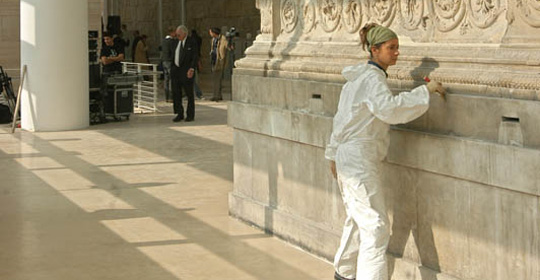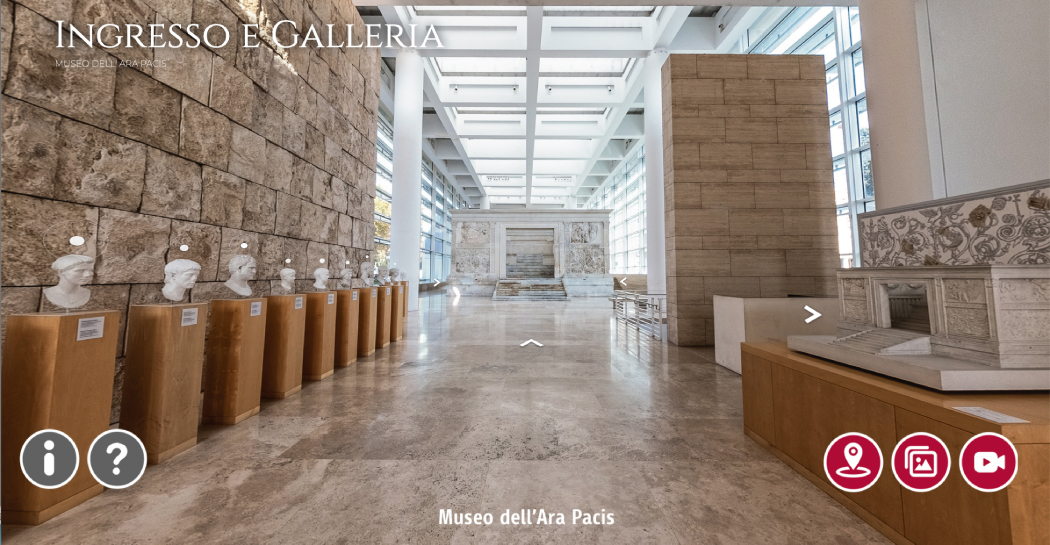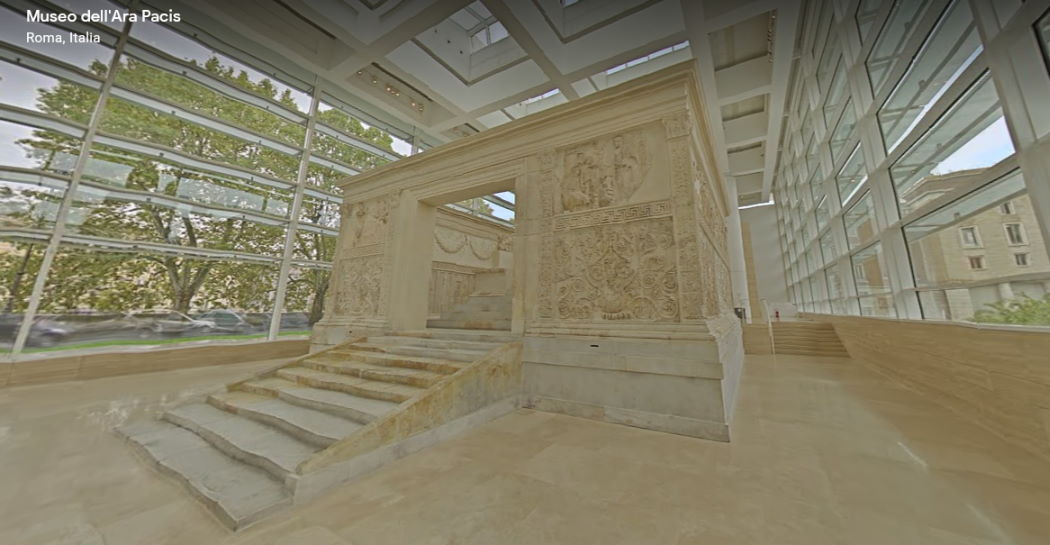Restoration
The first attempts at restoration of the Ara Pacis and the pavilion on the banks of the Tiber, in which it was displayed, date from the beginning of 1950, when the Municipality decided to free the structure from the protective wall in which was enclosed, repair the entablature of the altar which had been damaged by anti air raid protection, and to construct between the pilasters, in place of the glass which had been removed during the war, a wall 4.5 metres in height. The real refurbishment of the pavilion only took place in 1970 when the new crystal panes put in place.

During the Eighties, the first systematic restoration work began on the Altar. It was dismantled and several of the iron pivots supporting the projecting parts of the reliefs were substituted; fractures in the mortar were repaired, the restoration work that had already taken place was consolidated, the non-original parts were recoloured, and, naturally, the dust and deposits that had collected over the years were removed. It was during this work that the head now recognised as belonging to Honour, which had been mistakenly inserted into the Aeneas panel, was removed.
Although the refurbished glass did not adequately isolate the monument, it was hoped that the work done in the Eighties would be sufficient for effective long term conservation of the monument. However by the mid-Nineties problems were already becoming apparent: the ranges of temperature and humidity were too wide and the changes too sudden, causing a series of microfractures to open up again in the mortar; humidity was also causing those of the iron pivots which it had not been possible to replace to expand, thus fracturing the inside of the marble; a survey done of the state of the huge panes gave the worrying result that they were becoming detached from the supporting wall; and finally a layer of greasy and acidic dust had been deposited with astonishing rapidity over all of the surface of the altar, a result of the uncontrolled increase in traffic pollution and heating. The precarious conditions of the monument, and the impossibility resolving them by transforming the existing building, led the Municipality of Rome, in 1995, to start thinking about instead replacing the pavilion.







































